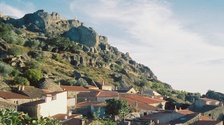Christmas and New Year’s are coming… or, as is more commonly said in Russia, New Year’s and Christmas are coming.
Why is the order different? What are the most frequently observed traditions in Russia? What festive delicacies can you taste there? What are the words that you can use to talk about winter holidays?
I will discuss the answers to all of these questions in this article. I hope that by reading it your spirits will become more Christmas-y and you will feel more confident when emailing to your Russian friends or when liking their Facebook photos during Christmas time!
The Russian Calendar
Up until the 18th century, Russia used the Julian calendar. However, due increased cooperation between Russia and the Western world, Russia was already using the Gregorian calendar in the context of international correspondence and scientific papers.
On January 25th, 1918, the Soviet government published a decree introducing the “new style” (the Gregorian calendar) and made it obligatory for every citizen to follow it. Since then, the Julian calendar has been used only by the Russian Orthodox Church.
The difference between the Julian and the Gregorian calendar is just two weeks. After the switch, the Soviet people began celebrating the New Year on January 1st and Christmas on January 7th, in accordance with the Gregorian calendar (Christmas was previously celebrated on December 25th back when Russia followed the Julian calendar). Gradually, people have de-emphasized Christmas and have begun to celebrate New Year’s in a much more significant way than the religious holiday. This has continued into modern times because for most people, even church-goers, it just seems logical to celebrate the holiday that comes earlier (in this case New Year’s or Новый год) with more festivities.
There is, however, a strange tradition that is still observed by some, which is to celebrate what is known as the “Old New Year.” This extra holiday falls on the Gregorian calendar’s January 14th (or the Julian Calendar’s January 1st). Usually, this is just another occasion for family or friends to get together.
New Year’s Traditions
In 1700, Peter the Great began the tradition of celebrating New Year’s Day on January 1st. He decreed that people should decorate their homes with fir trees (еловый) and juniper (можжевеловый) branches (ветка). The cannons would sound near the Kremlin, and the Russian people would decorate their fir-trees (ёлка) with wooden figures (деревянная фигурка) and nuts (орех).
These traditions would survive up until the Revolution in 1918. In 1929, the USSR formally forbade Christmas celebrations, and only in 1935 was the Soviet government ordered to decorate the New Year’s tree (украшать новогоднюю ёлку) for the children of the proletariat. In addition, they replaced the Bethlehem star (Вифлеемская звезда) at the top of the tree with a red star (красная звезда), mirroring those on top of the Kremlin’s towers. New Year’s Day, however, remained a workday until 1947.

Caption: The red star on the place of the Bethlehem star
In the USSR, New Year’s Day became a truly Soviet holiday, perhaps because it was free of ideological significance. Nowadays, people are granted a vacation period of ten days from January 1st to January 10th.
Ded Moroz, the Russian Santa Claus
The Russian Ded Moroz (Дед Мороз) is a modified version of the American Santa Claus. Since 1998, he has traditionally been said to reside in Velily Ustyug (резиденция в Великом Устюге). This functions as Ded Moroz’s post office, the place to which children from all over the country address their letters.
Ded Moroz has an assistant named Snegurochka or The Snow Maiden (Снегурочка). She is represented as either a small girl or a young lady dressed in a snowy garment. Ded Moroz and Snegurochka attend New Year’s parties (новогодний утренник) held at kindergartens, schools and offices; some people even pay for personal visits to their home.
These New Year’s characters greet people during the holidays, listen to children reciting seasonal poems and singing seasonal songs and watch children dancing for them. After that, they give presents. Traditionally, children will also perform a circle dance with Ded Moroz and Snegurochka around the New Year’s tree (водить хоровод вокруг ёлки).
New Year Colors
The traditional colors of the New Year are red and green, which have been borrowed from the West. People decorate their homes, offices and public places with fir tree wreaths (еловый венок), New Year’s trees (новогодняя ёлка) and cut-out paper snowflakes (вырезанная из бумаги снежинка); the latter are used quite frequently to decorate windows.
People also display candles (свеча) and hang up colorful lights (иллюминация). The streets are adorned with colorful illuminations, and cities will usually place a huge public New Year’s tree in their central square.
New Year Food
The Russian New Year’s dinner traditionally contains Russian salad (оливье), dressed herring (сельдь под шубой), jellied meat (студень) and tangerines (мандарин). All of these dishes are quite complex, made with a lot of mayonnaise (майонез) and numerous ingredients. Champagne (шампанское) is a must.
Celebrations
People begin buying presents and making plans for their celebrations starting on December 1st. The holiday is typically observed amongst a circle of close friends and relatives at a person’s home. However, it is becoming more and more common to celebrate New Year’s at a restaurant.
December 31st is the final preparation day. By this date, people have decorated their homes with New Year’s trees and have started preparing a huge dinner.
There is a saying that the new year itself will be influenced by the way that you celebrate the New Year’s holiday (Как встретишь Новый год, так его и проведёшь). Therefore, people do their best to dress in their finest clothes, to celebrate in the cleanest possible apartment and to enjoy the most sumptuous dinner they can.
By 10 pm on December 31st, the guests will be gathered at the New Year’s table (новогодний стол). Here, they will “see the old year off” (провожать старый год), reflecting on the best moments of the past year, while sharing their worries and wishing people good luck in the coming one (наступающий год).
In the background, the TV will broadcast New Year’s films like The Irony of Fate (Ирония судьбы), The Carnival Night (Карнавальная ночь) and Enchanters (Чародеи). Russians know these films by heart, but still watch them.
At 11:55 pm, people listen to a speech given by the President (обращение Президента), who will make concluding statements about the past year and welcome in the new one. Then, at midnight, they will listen to the Kuranty or Kremlin Clock (Кремлёвские куранты) chime twelve times. At this time, they will drink champagne and make wishes (загадывать желания). After the clock has rung, the TV broadcasts the national anthem (гимн).

Caption: The Kremlin Kuranty
During the anthem, the municipal fireworks display is also shown on television, and some people set off their own fireworks (запускать фейерверки) in their yards and light sparklers (жечь бенгальские огни). They then finish their dinner and go outside to make snowmen (лепить снеговика), take photos and celebrate in the company of other people at the New Year’s tree in the central square. Local authorities usually hold concerts there too. Various TV shows, like Goluboy Ogonyok or The Blue Light (Голубой огонёк) are broadcast throughout the night.
Presents (подарок) are given on New Year’s rather than on Christmas; in fact people unwrap them during the first moments of January 1st. For the next few days following the New Year’s celebrations, people go to the cinema, visit friends and relatives, go ice-skating or simply relax in the countryside.
Christmas Traditions
January 6th is the Russian Christmas Eve, known as the Sochelnik (Сочельник) and named after the sochivo, a dish made of wheat groats. It is the last day of the Christmas Fast (рождественский пост). However, the fast is rarely observed because of the New Year’s celebrations that take place during it. The old tradition is not to eat any food until the first star (первая звезда) appears in the sky.
Christmas Food
Christmas dinner in Russia differs from the New Year feast. According to pagan traditions, there should be twelve dishes (двенадцать блюд) on the table; these include a duck with apples (утка с яблоками), pickled vegetables (маринованные овощи), patties (пирожок), pies (пирог) and a kollyva (кутья), which is pearl barley served with poppy seeds, honey and nuts.
Christmas Celebrations
Religious people attend a nighttime Orthodox Christmas service (рождественская служба), which is also broadcast live on TV.
In olden times, when Christmas was celebrated before New Year’s, it was the culmination of the holiday season, notable for folk festivals (народные гуляния) and street parties. Today, it has turned into an annual day off that is only celebrated by church-goers.
Despite the purely religious meaning of the holiday, there is a tradition of Christmas fortune-telling (рождественские гадания) that has been described by many Russian literary figures. Young ladies put candles in front of mirrors (зеркало) and try to find the silhouette of a future fiance in the reflection. They also use coffee grounds (кофейная гуща) and other similar material for the same purpose.
The whole New Year’s and Christmas holiday period lasts until January 14th (The “Old” New Year) or sometimes until January 19th (The Epiphany). After that, people take down their New Year’s decorations and return to the usual flow of life and work.
Russian New Year and Christmas Specialities
Russian Salad (Оливье)
Ingredients:
- 250 g cooked sausage
- 3 boiled potatoes
- 1 boiled carrot
- 2 pickled cucumbers
- 3 hard-boiled eggs
- 250 g canned green peas
- salt to taste
- mayonnaise to taste
Directions:
- Dice everything, except for the green peas.
- Mix all the ingredients together.
- Add salt.
- Dress with mayonnaise.
Dressed Herring (Сельдь под шубой)
Ingredients:
- 6 hard-boiled eggs
- 700 g boiled beetroot
- 500 g boiled carrot
- 350 g marinated onion
- 500 g boiled potato
- 700 g salted herring fillet
- 450 g mayonnaise
- salt to taste
Directions:
- Grind all the ingredients.
- Pile in to layers, dressing each layer with mayonnaise.
- Garnish with greens.
Kollyva (Кутья)
Ingredients:
- 150 g wheat grains
- 50 g poppy seeds
- 80 g walnut
- 50 g sugar
- 50 g honey
- 10 g vanilla sugar
- raisins
- ground lemon peels
Directions:
- Wash the wheat grains and soak them in water for 24 hours.
- Rinse and boil for 50 minutes.
- Add the poppy seeds to boiling water and leave for 30 minutes, then drain water.
- Add the raisins to boiling water and leave for 5 minutes, then drain water.
- Chop the walnuts.
- Grind the poppy seeds until oil appears.
- Mix all the ingredients.
Vocabulary
Seasonal Phrases:
- Желаю крепкого здоровья! (I wish you great health!)
- Желаю счастья! (I wish you happiness!)
- Желаю удачи! (I wish you good luck!)
- Желаю много радости! (I wish you a lot of joy!)
Useful Links
Film
Cartoons
Despite the fact that Russia continues to be affected by globalization, it has managed to keep some of its unique holiday traditions. I hope that you now understand most of them and are ready to celebrate.
Happy holidays!
Image Sources
- Hero Image by frankieleon (CC BY 2.0)
- New Year’s tree by Lodo27 (CC BY-SA 3.0)
- The Kremlin Kuranty by Chelsea Marie Hicks (CC BY 2.0)







